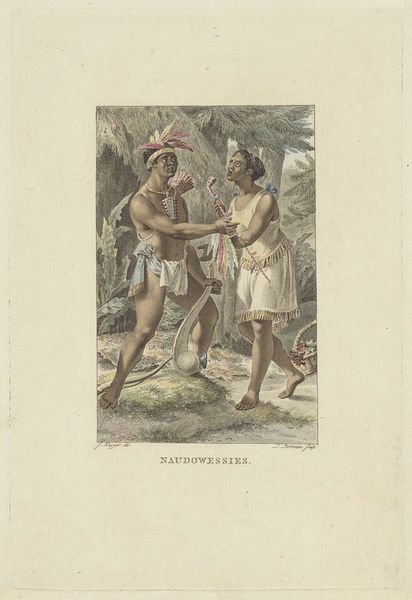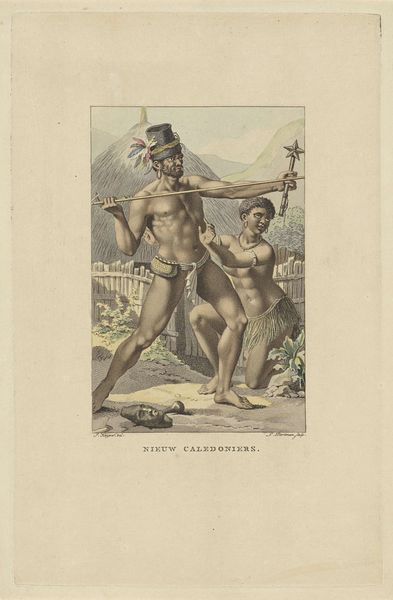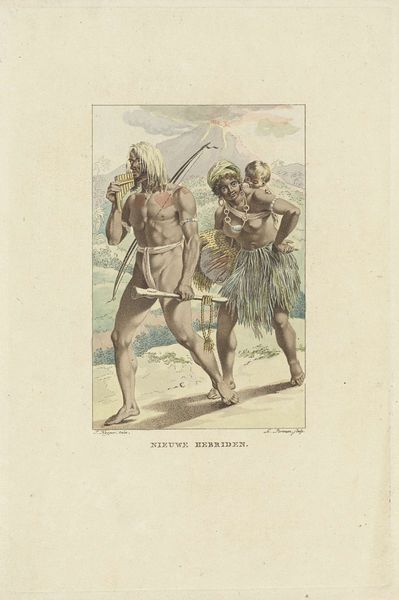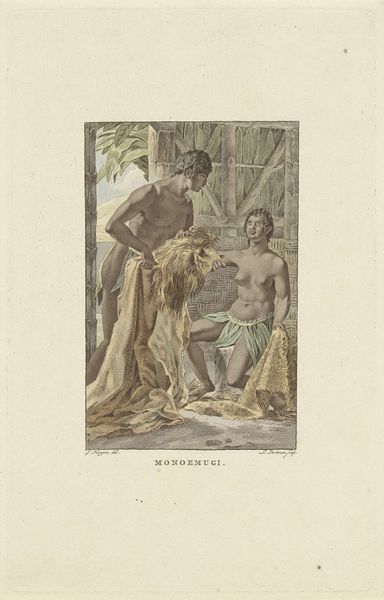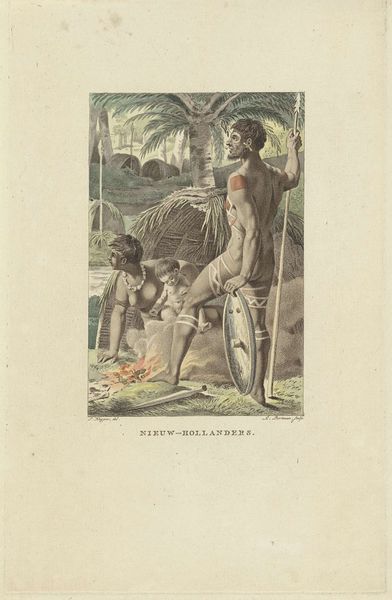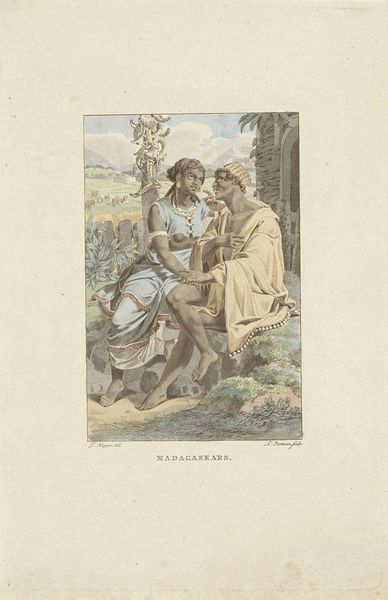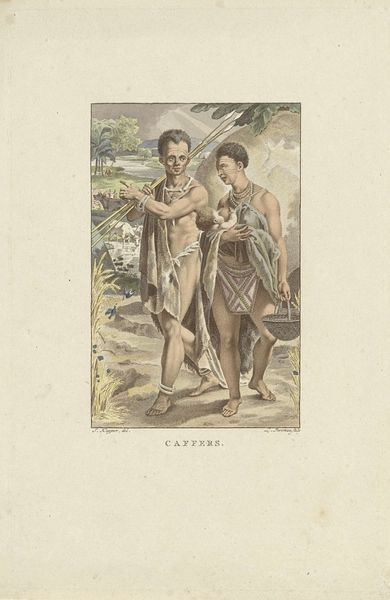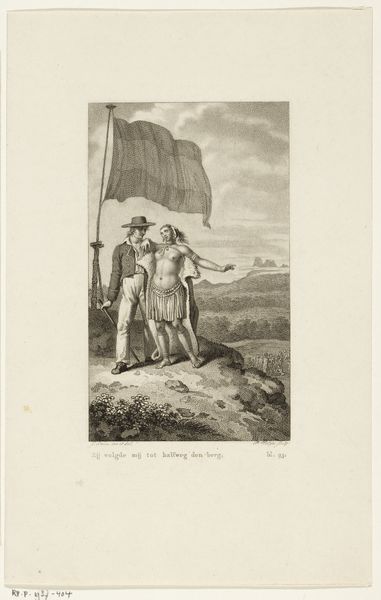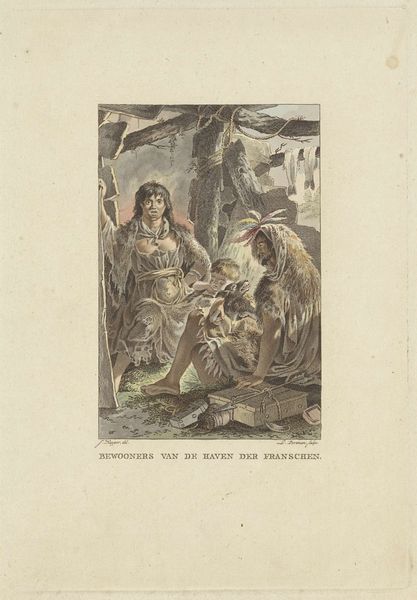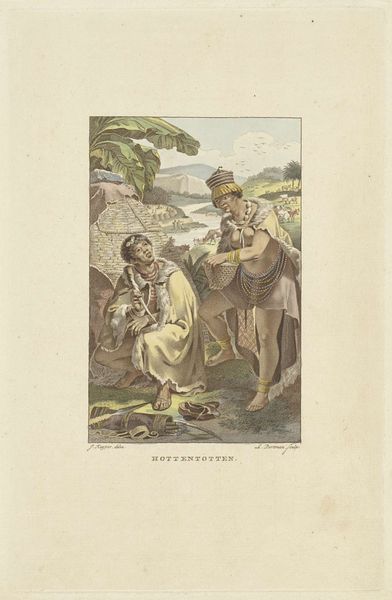
print, engraving
# print
#
cartoon carciture
#
engraving
Dimensions: height 222 mm, width 149 mm
Copyright: Rijks Museum: Open Domain
Editor: So, here we have "Bewoners van Paaseiland," or "Inhabitants of Easter Island," made around 1802 by Ludwig Gottlieb Portman. It's a print, an engraving, and... honestly, it has a strange, almost dreamlike quality. The figures seem caught between realism and something more...caricatured. What's your read on this piece? Curator: Dreamlike is a good start! It whisks me away to that hazy space between reality and imagination. This print feels like a relic, doesn't it? From a time when the "exotic" was filtered through a very European lens. The clothing is part-classical drape, part-cultural observation, yet that hat, carefully balanced in the woman's hands is an object, a story...a symbol of first contact. I feel this immediate and immense power dynamic. The islanders, while physically present, seem somehow…flattened, idealized in a way. The landscape becomes backdrop rather than a place. What I am left with are a pile of uncomfortable questions and maybe this image succeeds, however indirectly, because of this uneasiness it awakens in me. Does that make sense? Editor: Absolutely. That sense of unease is definitely there. The figures are so carefully posed, almost like a stage setting, that any authenticity feels… staged. Curator: Right. It's less about capturing truth, and more about creating a narrative that would resonate with European audiences. They're looking at the island through this romantic prism of the "noble savage." The image serves a political project; power imbalances solidify as the gaze of Western science fixes these people. In 1802, European explorations of the Pacific were relatively recent events. And these engravings offered a glimpse, however mediated, into a world utterly foreign to most Europeans. But ultimately what's most revealing is that the Easter Islanders aren't seeing us: the Europeans see themselves. The islanders simply occupy the stage on which Europe performs a distorted image of its glory. Editor: So, in a way, it’s more about the viewer than the viewed? Curator: Precisely. And recognizing that flip can unlock all sorts of understanding about historical perspectives. Editor: Wow, I'll definitely look at these types of artworks differently now! Curator: Glad to open that lock with you! Every work holds within it not only the obvious information, but also the hidden language of its culture. The fun lies in trying to decipher it all, no?
Comments
No comments
Be the first to comment and join the conversation on the ultimate creative platform.
